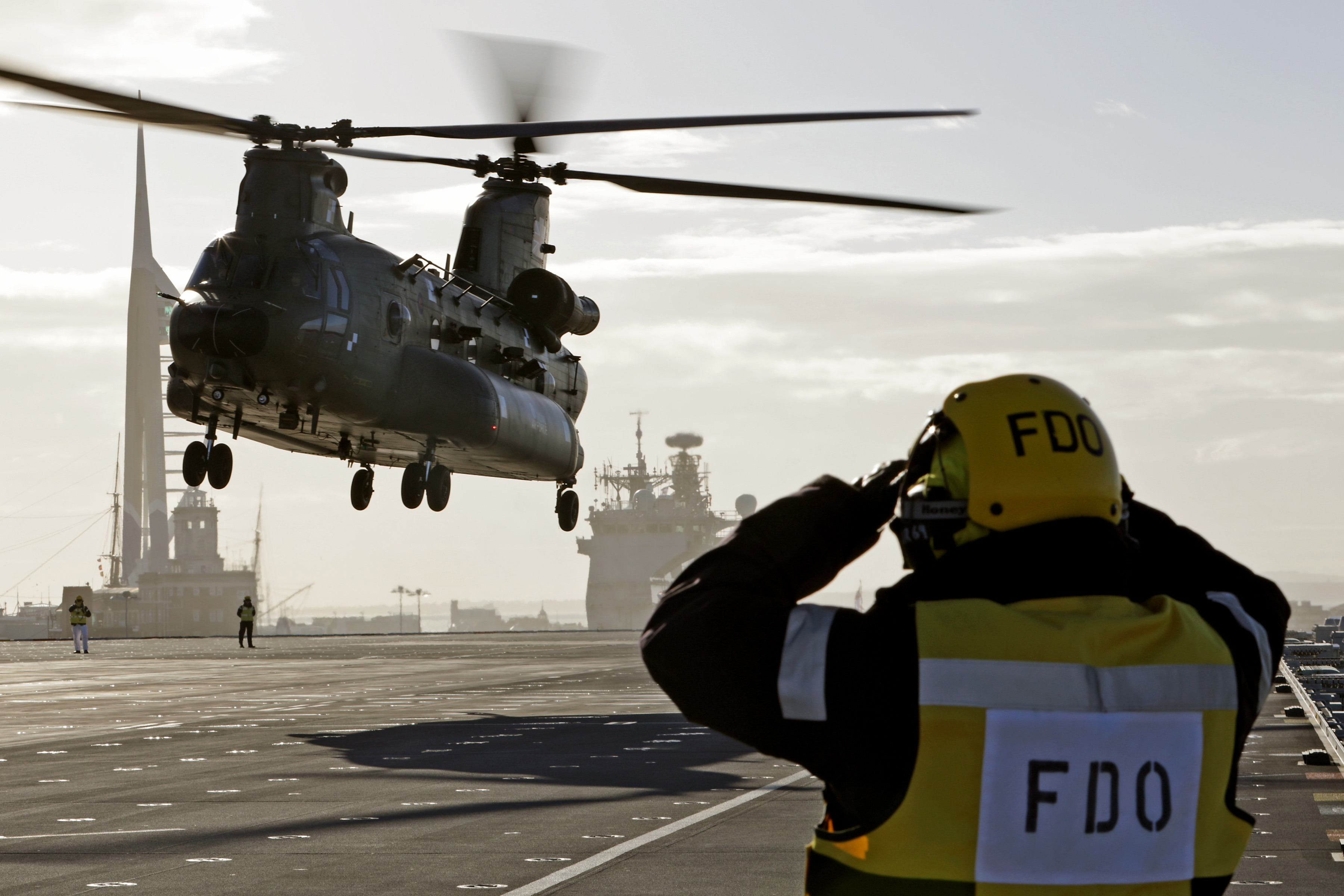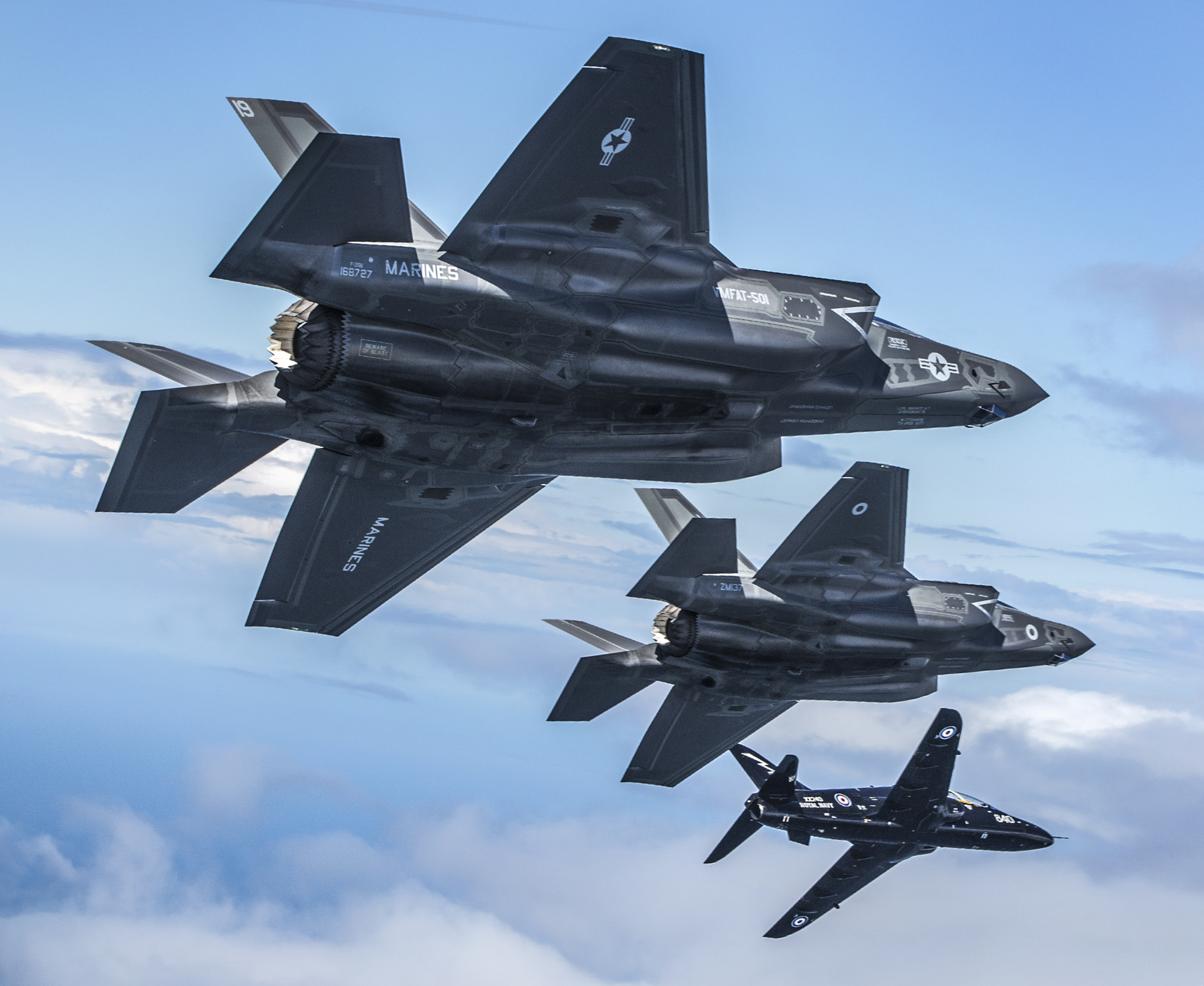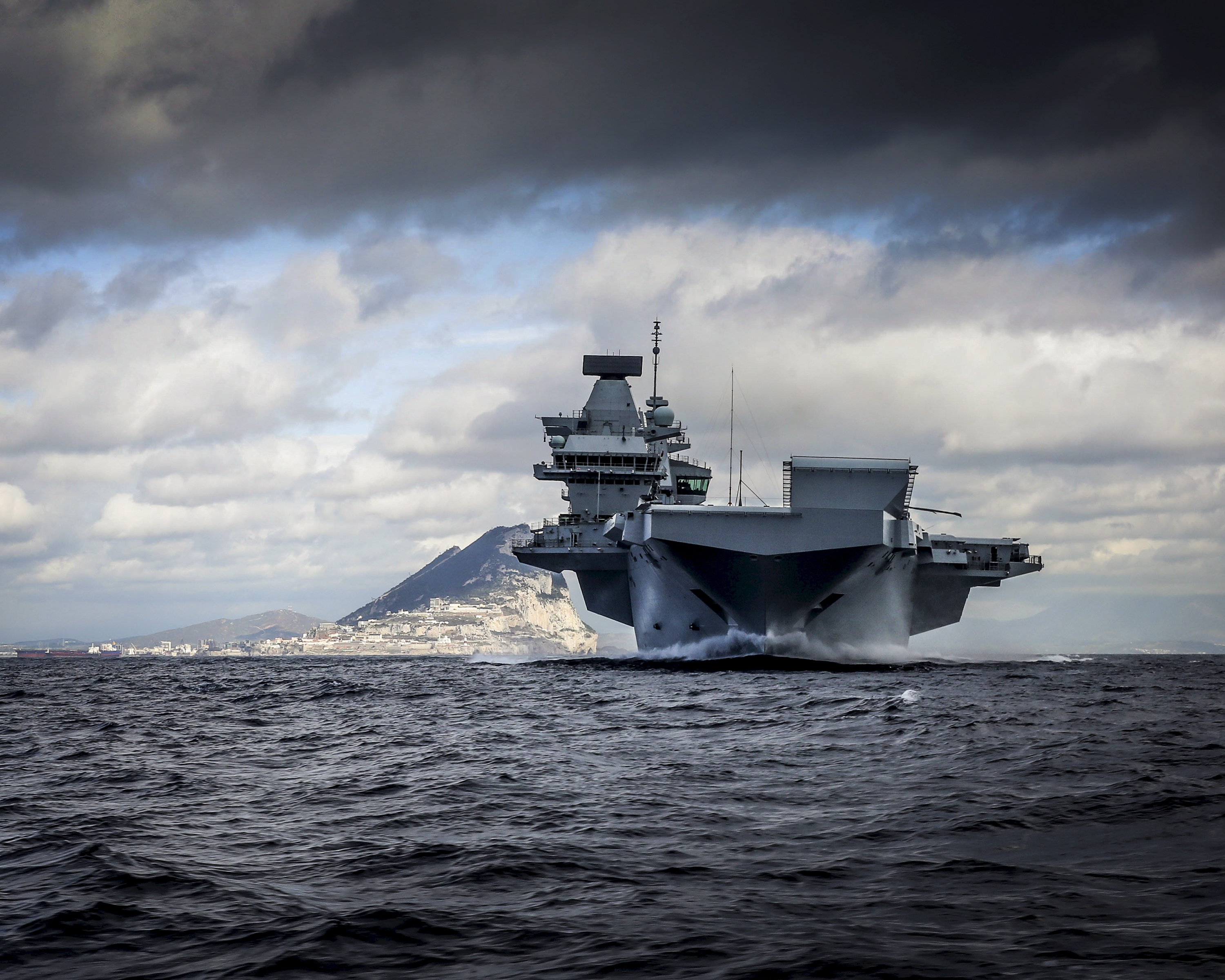
LONDON – Earlier this month, Britain’s national security adviser declared that the Royal Navy’s Queen Elizabeth-class aircraft carriers would be unlikely to ever deploy on high-end combat missions without support from friendly forces.
The two new flattops would “inevitably be used in a context of allied operations of some kind, if used in a contested environment”, Mark Sedwill told the House of Commons’ Defence Committee on May 1.
The London press suggested that the U.K. government would be unwilling to risk the ships in a unilateral warfighting operation similar to the naval task force sent to recapture the Falkland Islands from Argentinian occupation in 1982.
In addition to that unwillingness, it has long been known that the U.K. would require U.S. Marine Corps F-35B Lighting II Joint Strike Fighters to bolster its small number of jets on the 70,000-ton carriers, particularly during their early deployments.
And with an escort fleet reduced to just 19 frigates and destroyers, the Royal Navy will be reliant on surface combatants provided by the U.S. Navy and other foreign partners to help protect the carriers from technologically advanced adversaries.
Lead ship HMS Queen Elizabeth (R08) was floated out at Rosyth dockyard in Scotland in 2014, commenced sea trials last June and was commissioned into the Royal Navy on Dec. 7. The future HMS Prince of Wales (R09) was launched at the same yard two weeks later and is now being fitted out. Construction costs for the two ships have totaled £6.2 billion (about $8.4 billion).

In August 2017 Queen Elizabeth rendezvoused with the USS George H.W. Bush (CVN-77) carrier strike group during the multinational Exercise Saxon Warrior in the North Sea and northern Atlantic, with some Royal Navy personnel sharpening their aviation-related skills on board the U.S. carrier.
The British carrier completed rotary wing trials in February this year, conducting 450 deck landings with Chinook Mk 5 helicopters and 540 landings with Merlin Mk 2 aircraft. Both types flew an average of 10 hours per day in all weather conditions, generating data that will enable technical staff to draw up ship helicopter operating limits.
Amphibious warfare trials were also conducted, with a detachment of Royal Marines commandos simulating an air assault from the ship.
Queen Elizabeth is now alongside in Portsmouth naval base on England’s south coast, covered in tents and scaffolding for a 13-week capability insertion period (CIP) in preparation for an inaugural transatlantic voyage in September. The ship will then conduct a long-awaited first flight trials with F-35B aircraft and is also expected to visit New York City.
“Every month sees a graduated increase in the capability the ship can deliver,” Rear Adm. Keith Blount, the Royal Navy’s Assistant Chief of Naval Staff for Aviation, Amphibious Capability and Carriers, said in a press statement last month.
“With over a thousand helicopter deck landings already under our belt, we’re developing more expansive clearances for helicopters than we have ever seen before.”
“Next up are the jets, and the ship is being fitted with all the kit and communication systems required to ensure the aircraft and carrier can work together as a system. This is highly technical and time-consuming stuff and our sailors, airmen and shipyard workers are doing a great job in piecing it all together,” Blount continued
Various fixed-wing landing aids are being installed during the CIP, chief among them the U.S.-designed AN/SPN-41/41A Instrument Carrier Landing System. With an azimuth antenna at the stern of the ship and an elevation antenna on the aft island, this system transmits flight path information to approaching aircraft, which can be viewed in the pilot’s head-up display.
Defense science company Qinetiq has developed a flight deck lighting array – dubbed the Bedford array – to assist F-35B rolling vertical landings, but this will be fitted initially to the future Prince of Wales as a technology demonstrator.

Maintenance is being carried out on the thermal metal spray coating that has been applied to aft sections of Queen Elizabeth’s flight deck, designed to protect it from jet blast during F-35B vertical landings, when temperatures could hit 2,700 degrees Fahrenheit.
Workers are fitting the three Phalanx close-in weapon systems that will give the future fleet flagship a last-ditch self-defense capability against inbound missiles.
Funnel badges displaying the ship’s crest are being bolted to the uptakes, both island superstructures are getting additional cabling, and the junior rates’ scullery is being doubled in size and gaining a new conveyor dishwasher system.

“Occasionally the ship will look like it’s held together with scaffolding – it isn’t and without it that mast, aerial, radar, funnel, anemometer or even paint job won’t get done,” Blount continued in his statement.
“These are exciting times; the ship is on track, as is Prince of Wales. When [Queen Elizabeth] gets to the States in the autumn, things are going to get noisy, pointy and fast!”
Carrier strike full operational capability for Queen Elizabeth is scheduled for 2020, and the first operational deployment is planned for early 2021.
The U.K. has to date received 15 of the 48 F-35B Lighting II aircraft ordered so far – hence the expected need for support from U.S. Marines’ F-35Bs – with a total of 138 expected to be acquired over the lifetime of the program.





